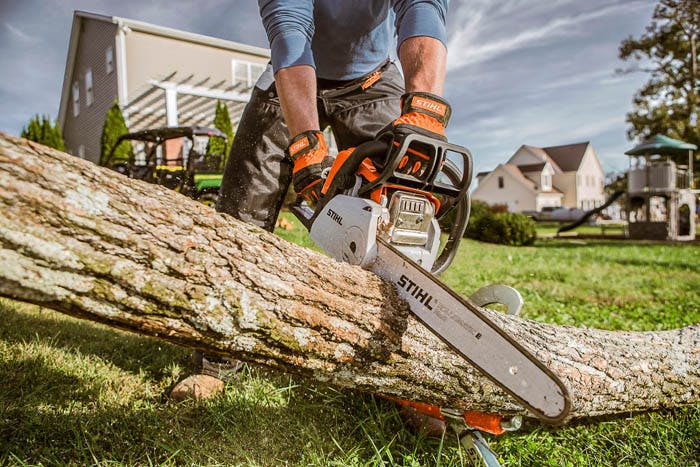Maintaining a sharp chainsaw blade is essential for efficient and safe cutting performance. However, many users wonder how many times they can sharpen their chainsaw blade before it becomes ineffective or needs replacement. In this article, we'll delve into the factors that influence the sharpening frequency of chainsaw blades and provide practical insights to help you prolong the lifespan of your blade while maximizing cutting efficiency.
1. Blade Material and Quality:
- Hardness and Durability: The material composition of the chainsaw blade significantly impacts its sharpening potential. High-quality blades made from durable materials such as hardened steel or carbide can withstand multiple sharpening sessions without significant loss of performance.
- Manufacturing Standards: Chainsaw blades produced to high manufacturing standards undergo specialized heat treatments and precision grinding processes, resulting in blades that maintain their sharpness and edge retention through multiple sharpening cycles.
2. Maintenance Practices:
- Regular Maintenance: Proper maintenance practices, such as cleaning, lubricating, and tensioning the chain, can extend the lifespan of the chainsaw blade and reduce the frequency of sharpening. Regular maintenance helps prevent premature wear and damage to the blade's cutting edges.
- Proper Sharpening Technique: Employing correct sharpening techniques, such as maintaining consistent angles, using appropriate sharpening tools, and avoiding excessive material removal, can maximize the number of times a chainsaw blade can be sharpened while preserving its cutting performance.
3. Wear and Damage:
- Extent of Wear: The degree of wear and damage to the chainsaw blade's cutting edges will determine how many times it can be effectively sharpened. Minor wear from routine use can often be addressed through sharpening, whereas severe wear or damage may require blade replacement.
- Types of Damage: Damage such as chipping, gouging, or excessive wear to the blade's cutting teeth may reduce the blade's sharpening potential. It's essential to inspect the blade regularly and address any signs of damage promptly to prevent further deterioration.
4. Sharpening Frequency:
- Optimal Sharpening Schedule: The frequency of sharpening a chainsaw blade depends on various factors, including usage intensity, cutting conditions, and maintenance practices. As a general guideline, chainsaw blades may require sharpening after every 3-5 hours of cutting time, but this can vary based on individual circumstances.
- Visual Inspection: Inspect the chainsaw blade regularly for signs of dullness, uneven cutting, or reduced cutting efficiency. If you notice decreased performance or increased cutting effort, it may be time to sharpen the blade.
5. Replacement Considerations:
- End of Lifespan: Eventually, even the highest-quality chainsaw blades will reach the end of their sharpening lifespan. When the blade's cutting edges become too worn or damaged to restore through sharpening, it's time to replace the blade with a new one to maintain cutting performance and safety.
- Cost vs. Benefit Analysis: Consider the cost of sharpening versus the cost of blade replacement, taking into account factors such as blade quality, sharpening equipment, and labor costs. In some cases, investing in a new blade may be more cost-effective than continuing to sharpen an excessively worn blade.
Conclusion:
In conclusion, the number of times you can sharpen a chainsaw blade depends on various factors, including blade quality, maintenance practices, wear and damage, sharpening frequency, and replacement considerations. By adhering to proper maintenance techniques, employing correct sharpening methods, and monitoring the blade's condition regularly, you can maximize the sharpening potential of your chainsaw blade while ensuring optimal cutting performance and safety.

